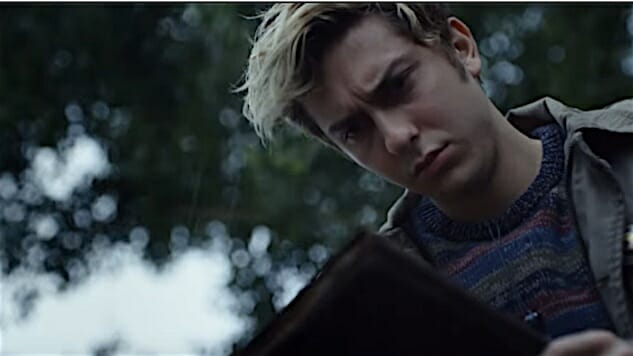
Netflix’s Death Note adaptation is likely to disappoint any diehard fans of the source material. Those fans also have a frankly absurd amount of extant Death Note to revisit whenever they’d like—12 manga volumes, 37 anime episodes, multiple live-action movies, novels, videogames, and even TV dramas. The sheer bulk of the Death Note franchise speaks to the endless malleability of its premise: a high school student finds a notebook belonging to a god of death that can kill anyone whose name is written down in it.
Naturally, manga writer Tsugumi Ohba found plenty of ways to complicate said premise beyond parody, and the convolutions Death Note goes through to shock the audience directly influenced later anime like Psycho-Pass. The U.S. Death Note will likely be of more interest—although distribution on Netflix guarantees a wide, disparate audience—to fans of director Adam Wingard’s bold horror movies than to fans of the manga and anime. At 100 minutes, it necessarily takes bits and pieces from the manga and places them into its own framework.
But with three credited scriptwriters, including Charles and Vlas Parlapanides (Immortals) and Jeremy Slater (Fantastic Four), the film barely hangs together on a writing level, getting by instead on sheer attitude. Light Turner (former Naked Brother Nat Wolff) finds the Death Note and meets the death god Ryuk (voice/facial mocap by Willem Dafoe, with Jason Liles as the man in the suit). The film sprints through these formalities. It’s not ten minutes before Turner has used the Death Note to decapitate a bully via a The Omen-style series of accidents. Then he uses it to pick up sullen cheerleader Mia (Margaret Qualley, The Leftovers), and their unstable relationship spirals out of control—along with their abuse of the Death Note, which sets the erratic genius detective L (Lakeith Stanfield) on their trail.
Wingard and DP David Tattersall (the Wachowskis’ Speed Racer) opt for a deeply arch tone, with canted angles and heightened neon lighting everywhere. Stanfield and Dafoe are pitch-perfect for their roles—the former rich with physical tics and the latter sadistic and sly. But Wolff’s performance has a twitchy, unpredictable early-Nicolas-Cage vibe to it, which throws the entire production off-kilter. By the end of the film, I got the sense that Wingard and company see Death Note not as some rarefied text to be reverentially translated, but as a completely absurd pulp story.
They’re not far off base, either. The source material is a contrivance machine with no real sense of humor; Wingard’s Death Note moves like a bullet and doles out practical gore and overheated melodrama in equal measure. The presence of Hobo With a Shotgun’s Jason Eisener as second-unit director is evident in the gushy splatter FX, which sadly taper off about halfway through the movie.
Death Note also builds on Wingard’s real strength as a filmmaker—his canny use of soundtrack music. You’re Next turns Dwight Twilley Band’s insistent earworm “Looking for the Magic” into an endlessly looping monster, while The Guest cues us to its goth protagonist’s headspace with deep cuts from Sisters of Mercy, Clan of Xymox, and Love and Rockets (not to mention predicting the Stranger Things-led synthwave craze by two years).
Death Note has its share of ’80s pop and chunky synthwave (including a track from Makeup & Vanity Set), but it’s the climactic drop of Chicago’s “I Don’t Want to Live Without Your Love” that takes the cake. The song’s po-faced balladry undercuts the tacky melodrama of the film’s conclusion, which sees Light and Mia hanging from an exploding ferris wheel, while also ironically commenting on the viciousness of their relationship, which by the end is an escalating tangle of attempts to kill each other using the Death Note. This is the poisoned heart of the film, and Wingard accents it in beautifully over-the-top fashion.
The impish tone of Death Note will prove divisive, even among viewers with no connection to the source material. Like, say, 1979’s Phantasm, which Wingard briefly references in one scene, it boldly toes the line between sharp self-awareness and goofiness—two gears that tend to rub audiences the wrong way no matter what. Faint praise this may be, but it is one of the few American anime adaptations to possess any identity whatsoever, let alone to comment on and reconfigure the original text in interesting ways.
Director: Adam Wingard
Writers: Charley Parlapanides, Vlas Parlapanides, Jeremy Slater (screenplay); Tsugumi Oba,Takeshi Obata (source material)
Starring: Nat Wolff, Lakeith Stanfield, Margaret Qualley, Shea Whigham, Willem Dafoe, Jason Liles
Release Date: Streaming on Netflix